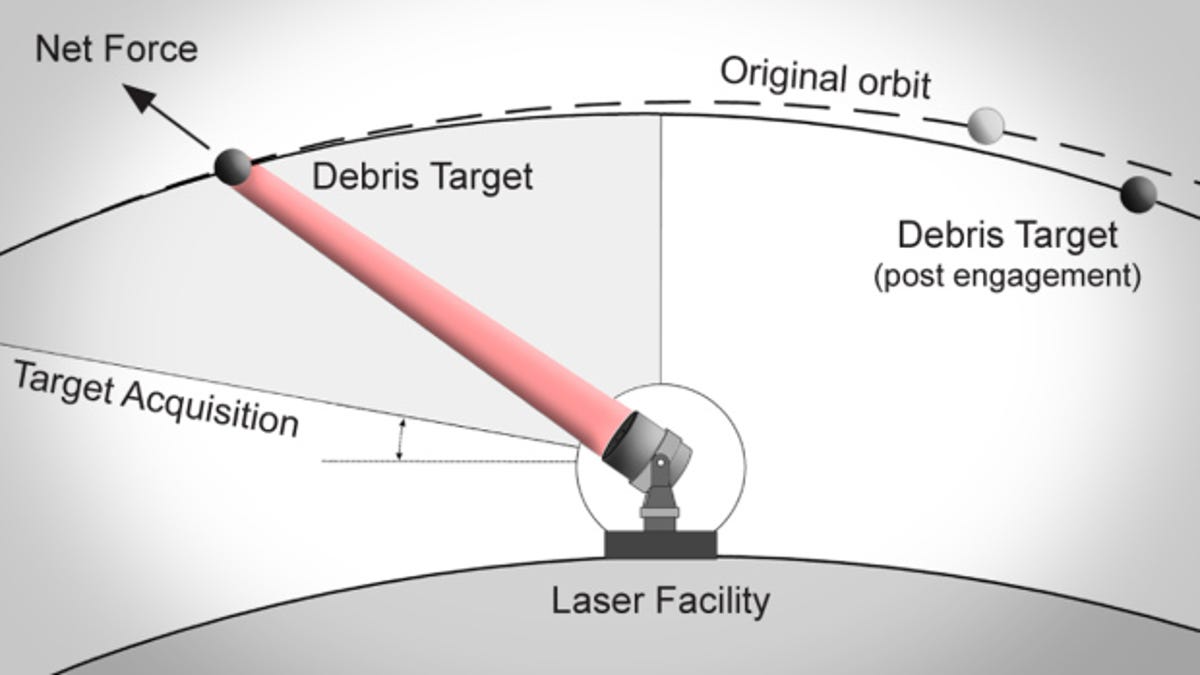Space laser proposed to zap space junk
Laser would nudge potentially dangerous space debris away from satellites and spacecraft.

What to do with all the space junk now in orbit around Earth? Each year, that question grabs a headline or two before disappearing. But that doesn't mean the problem is getting any closer to resolution.
In fact, just the opposite: scientists warn that the risk of a collision between debris objects in low-Earth orbit and a space craft remains a real risk. In 2009, Hugh Lewis, a lecturer in Aerospace Engineering at the University of Southampton, predicted that the threat posed by space debris would climb by 50 percent in this decade. Perhaps the most high-profile incident occurred in February 2009 when an Iridium satellite smashed into a defunct Russian satellite above northern Siberia, creating an estimating 1,700 pieces of debris in the process. Also, last year the International Space Station had to fire its thrusters to dodge an old NASA satellite that's floating around up there.
All told, NASA estimates there are more than 500,000 pieces of debris in orbit around the Earth, traveling at speeds up to 17,500 mph. Now some scientists are proposing a solution: they say a medium-powered ground-based laser combined with a ground-based telescope could reduce the risk of collision by nudging potentially dangerous debris out of the way.
In a recent paper, James Mason, a NASA contractor at the Universities Space Research Association in Moffett Field, Calif., and his colleagues argue that such a system is feasible. Although they say more study is required before actual implementation of a laser collision avoidance system, they report that lab simulations suggest that the idea would work in practice.
The idea would center around the deployment of a medium-powered laser of 5 to 10 kilowatts to essentially nudge debris off a potential collision course.
"Our simulation results suggest that such a system would be able to prevent a significant proportion of debris-debris conjunctions," they write, adding that the system could "substantially perturb" the orbits of debris fragments through the applications of photon pressure.
As might be expected, the question of whether such an idea would do the trick remains a topic of debate. William Priedhorsky, of Los Alamos National Laboratory in New Mexico, told Nature he thought the system would be ineffective when it came to pushing aside especially heavy objects. What's more, there are going to be lingering suspicions that any sort of space laser might get commandeered by the military to blind satellites sent into orbit by rival nations.
This isn't the first time that scientists have suggested Flash-Gordon-like solutions to getting rid of space junk. In December, the Russian space agency proffered an idea to build an orbital pod that would sweep away satellite debris. Details remain shrouded from the public but the Russians say they hope to have the craft ready to go no later than 2023.
This story first appeared on CBSNews.com.

